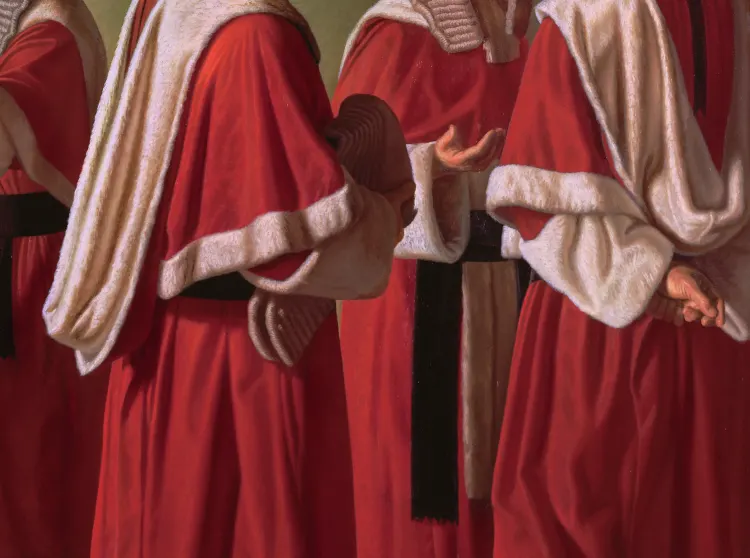“At the constitutional level where we work, ninety percent of any decision is emotional. The rational part of us supplies the reasons for supporting our predilections.” – U.S. Supreme Court Chief Justice Charles Evans Hughes

A Culture of Deeply Entrenched Judicial Abuse
In the shadow of the infamous Guy Andrews and Salvatore Vasta scandal, a surge of misconduct allegations against Australian judges has gripped Queensland, New South Wales and Victoria, exposing fissures in the judiciary’s vaunted impartiality.
The affair, which saw two federal magistrates from the Family Court division suspended amid probes into their conduct, ended in tragedy: Andrews took his own life rather than endure a parliamentary inquisition. Vasta, meanwhile, faced scrutiny that laid bare systemic vulnerabilities.
Guy Andrews lacked the courage of Di Fingleton, former Chief Magistrate of Queensland, jailed by her peers whilst she was a sitting judicial officer. Her jailing and trial were both blatant breaches of the constitution and the law. But none within Queensland’s bench acknowledged or notice the problem of their actions and their omissions in the Di Fingleton affair.
Now, echoes of that turmoil reverberate as complaints multiply, centering on judges who allegedly favor former chamber-mates, school mates and lawyers elevated to lifelong alliances on the bench, where biases toward certain counsel are flaunted with impunity.
Troubling Inertia at Regulatory Level
In the corridors of Australia’s legal oversight, a troubling inertia grips the watchdogs meant to safeguard justice. The Legal Services Commission in Queensland, New South Wales and Victoria, bodies entrusted with probing complaints against errant practitioners, stand accused of a glaring reluctance to pursue high-profile lawyers embroiled in misconduct.
Despite compelling evidence laid bare before them, these regulators have repeatedly invoked procedural ‘technicalities’ to sideline allegations, allowing influential figures to evade scrutiny and perpetuate a culture of impunity that undermines the very foundations of ethical practice. As whispers of favoritism grow louder, one must ask: Are these guardians of the profession protecting the profession, or merely its elite?
NOTE
According to the Queensland Law Society’s own published figures, a cumulative total of slightly more than 16,300 complaints concerning the professional conduct of solicitors was lodged with the Society between 2010 and the close of 2025. A more penetrating scrutiny of the underlying data, however, discloses a markedly graver reality: in the period stretching from 2010 to 2025, the actual volume of complaints surpassed 24,000. A significant proportion of these grievances pertained to instances of judicial intimidation and overt partiality, whereby members of the Bench habitually accorded preferential treatment to counsel appearing for one party in contested proceedings.
Multiple practitioners, speaking only under strict assurances of confidentiality, have corroborated the persistent and systemic character of such judicial bullying and favouritism, practices that continue unabated within the state’s courtrooms. The legal practitioners boards and Law Societies of New South Wales and Victoria fare no better. However Queeensland by some accounts including the accounts of two of its past presidents, corroborate the existence of judicial bullying and intimidation and preferential treatment to counsel appearing for one party in contested proceedings.
Star Chambers and Old School Ties– More Dangerous than Net Zero
For years, these grievances have languished, unheeded by chief justices and legal services commissions alike, dismissed as mere whispers in the corridors of power. Yet a pivotal breakthrough has shattered the stasis: Irrefutable evidence, furnished by a complainant, has triggered formal investigations into two Queensland jurists and three of their Victorian counterparts. The core accusation? Clandestine discussions of pending cases, conducted in private without notifying opposing counsel, a breach that undermines the adversarial bedrock of justice.
Judges who deliberately skew rulings, favor one party, and hurl baseless, gratuitous slurs at others including witnesses or counsel, courts later treat as damning character verdicts which sabotage fair trials.
These calculated or reckless barbs balloon litigation costs via appeals to excise them, heap punitive burdens on the maligned, and evade reversal behind the shield of judicial discretion, abusing power to forge illegitimate credibility calls.

Vandalism from the Bench– Activism?
A judge need only declare, “I do not believe the witness and find his/her testimony unbelievable” -even where on the evidence it is not- while adding, “but I do not think he/she is dishonest.” Such comments are gratuitous, and are reckless as they can be and, often are deliberate and colourable to damage the reputation, credibility and integrity of a party to a proceeding.
A Step Further into the Darkness of Judicial Activism
At the other end of the spectrum consider the exemplar of Justice Michael Lee’s adjudicative excess in the Wilkinson defamation proceedings, a civil adjudication that precipitously engendered a de facto criminal verdict in a peripherally linked matter, thereby impugning the probity of his determination that the quotidian and inherent connotation of rape encompasses “non-advertent recklessness” (a nebulous construct within the ambit of that grave offense), evincing, as detractors contend, unvarnished judicial activism.
By ascribing the criminal imputation of rape to Lehrmann through a ‘meticulous forensic’ examination of testimonial evidence from sundry witnesses, buttressed by CCTV corroboration, despite the irreducible epistemic opacity surrounding the precise events in the Minister’s office, known solely to Lehrmann and Higgins, such rulings epitomize the pernicious propensity of jurists to desecrate judicial integrity by arrogating legislative prerogatives unto themselves.
Governments: Complacent or Complicit?
Senior barristers in both states, speaking on condition of anonymity, decry this as an entrenched malaise, one that skews verdicts through asymmetric procedural hurdles and judicially sanctioned cost-shifting maneuvers (colloquiolly known in some jurisdictions as, procedural skirmishes, trolley load litigation, wedging poorer parties with heavy cost burdens through litigation exhaustion). Litigants, they warn, bear the brunt: Unjust rulings erode public trust, tilting the scales not toward equity, but favoritism.
As inquiries unfold, the question looms, will this reckoning cleanse the bench, or merely expose deeper rot? The more disturbing question is; why is government silent inspite of calls for a Royal Commission into the Legal System and the Judiciary? Is it complacency or complicity on the part of government?
J Baker

